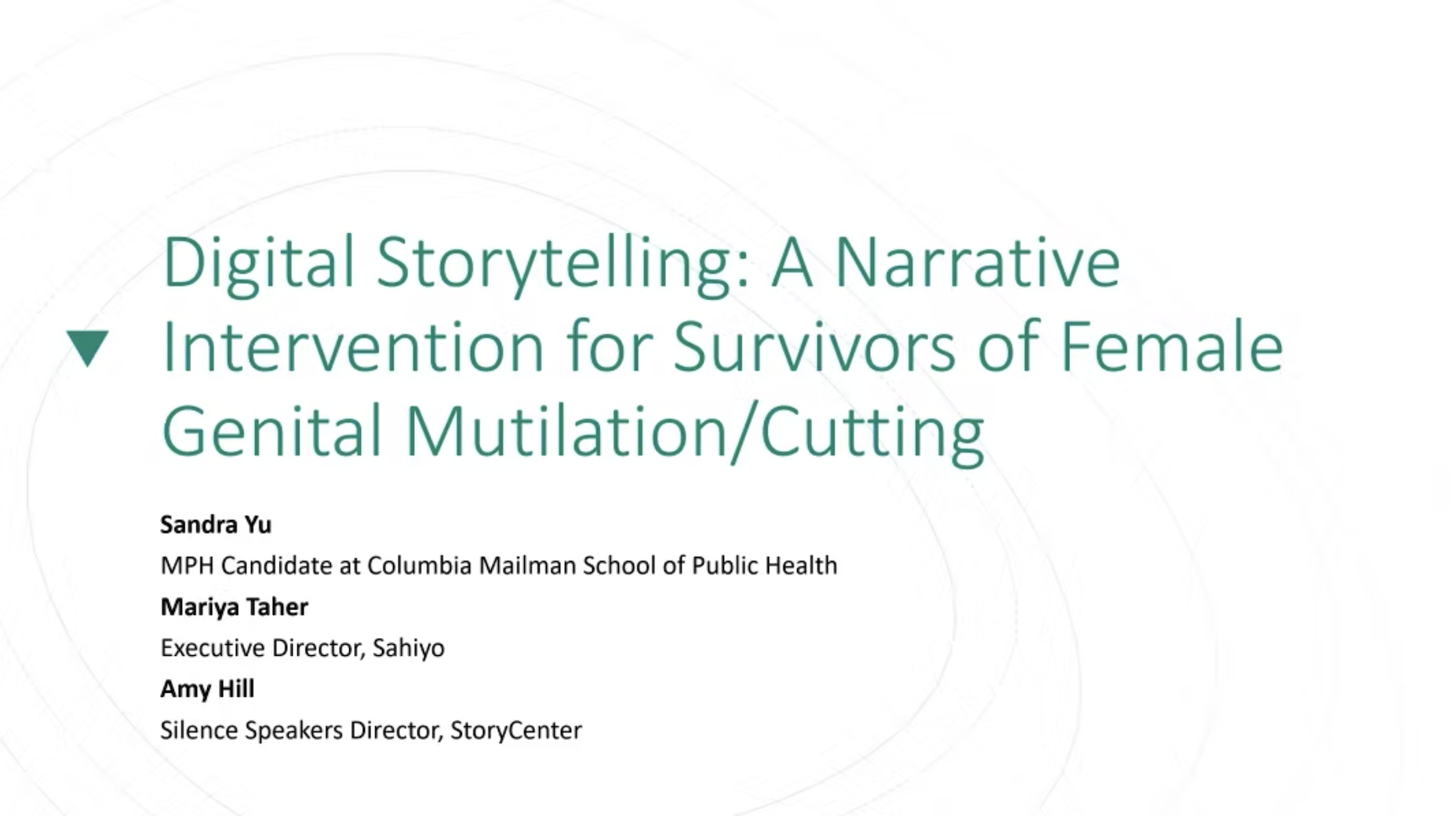Where, and how, does agency (or one’s capacity to act) manifest itself for survivors of female genital mutilation/cutting (FGM/C)?
How can survivors heal and find community with each other?
These were two of the questions I pursued through a research project on the effect of digital storytelling on survivors of FGM/C, based on the long-running Voices to End FGM/C storytelling project co-hosted by Sahiyo and StoryCenter.
We were a small team, including myself, several Sahiyo volunteers, Mariya Taher, and Amy Hill, trying to understand and document the complex and psychosocial effects of storytelling on trauma. Over the course of two months, in which we interviewed 15 survivors, and more months of qualitative analysis, we drew out common experiences that were interwoven into many survivor stories. Although our sample size was small, I would like to share some of our findings, along with important implications for activism work.
1. Understanding FGM/C stories as counter-narratives
In many of my interviews with survivors, the interviewees explained that the workshop space and process of storytelling allowed them to become vulnerable. Where the act and experience of FGM/C may have taken away agency from the survivors, the survivors explored the reclamation of their agency through storytelling. The workshop empowered survivors in many ways, presenting opportunities for survivors to tell their own stories with their own words, images, and videos in multiple sessions. The authenticity of each story undermines traditional silencing of such stories: these stories were brave counter-narratives to the dominant culture in the survivors’ respective communities.
Telling my story opened my vulnerability; and it’s okay to be vulnerable. The experience was therapeutic for me. I was empowered. I was transformed.
The storytelling made me confront all of my fears, all my demons ever, all the thoughts in my head, because I had to write to share that story. So the storytelling helped me … because I can't run anymore. For storytelling, you need to put everything down.
2. Solidarity in silence and story
One theme was immediately recognizable in each story and interview: solidarity. The connection between survivors, facilitated by the digital storytelling workshop space and community built by Sahiyo, was apparent in each interview. Catharsis came not only from the act of storytelling but also the mutual presence and comfort of the survivors. In both silence and storytelling, workshop participants found catharsis in each other, a beautiful alternative to the oppressive tradition of silence.
Being in this affinity space where every single woman in that group and bond from the same thing that I had gone through, I felt like our healing is different.
I was using other people's stories as a foil to see what spaces intersect with my own experience that I just haven't ever thought twice about.
3. Public identification in advocacy
Many survivors in the workshop were and are advocates against this harmful practice. The magnitude of courage needed to be a public advocate cannot be understated. Survivors must navigate conflict with family and community. The result is a complex and nuanced view of FGM/C, condensed into two-to-three minute digital story that each stands alone and in solidarity with each other. The Voices to End FGM/C collection consolidates a rich dialogue between individuals and communities, where each individual storyteller seeks to be influenced and to influence in their public advocacy.

